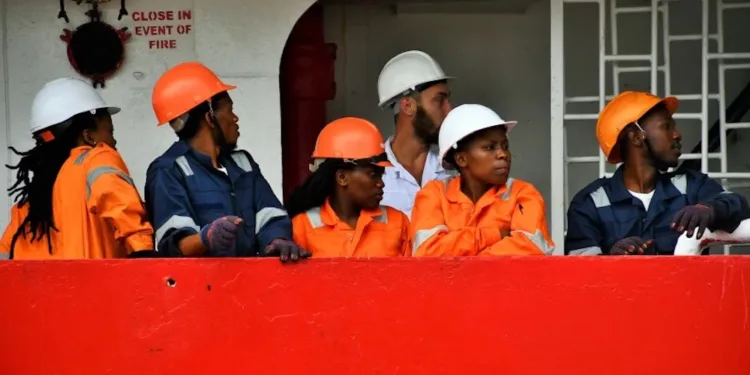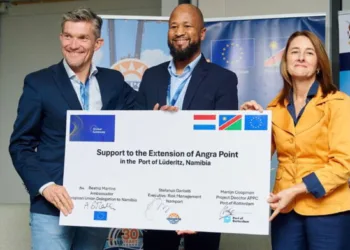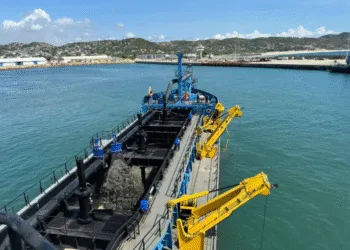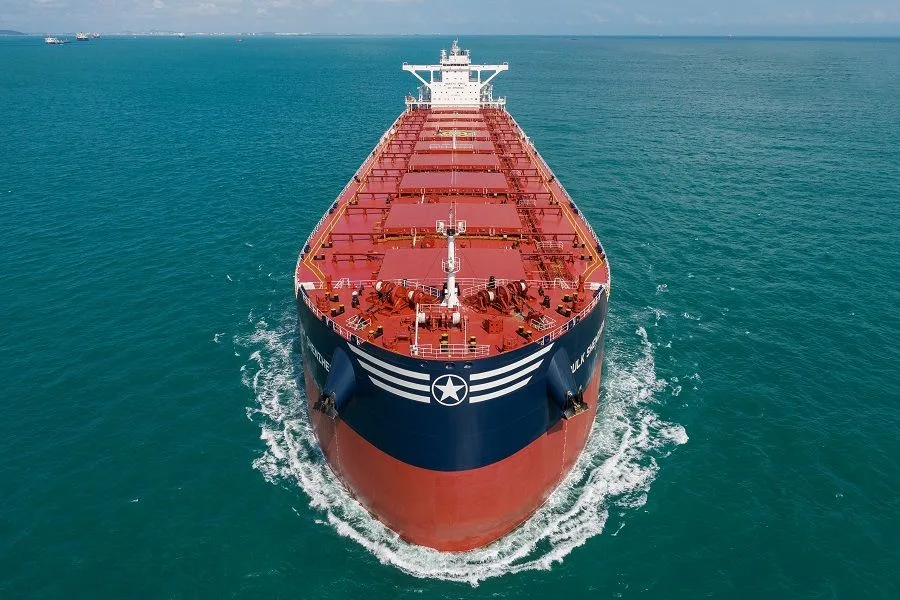Shipping’s human capital crunch is fast becoming one of its defining challenges of the decade. The latest chapter from our brand-new Seafarers magazine which is being distributed across Hong Kong Maritime Week.
From Singapore to Copenhagen, shipowners and managers are grappling with a shrinking supply of qualified crew just as fleets grow larger, more complex, and more technologically advanced. The numbers are sobering: the International Chamber of Shipping forecasts a shortfall of nearly 90,000 officers by 2026, a figure that echoes across boardrooms and crewing desks alike.
Yet, amid warnings of a tightening labour pool, there is also renewal. Companies are rethinking how and where they recruit, expanding beyond traditional strongholds and investing in training and wellbeing with a sense of urgency not seen in a generation.
As Cyril Ducau, CEO of Eastern Pacific Shipping (EPS), one of the world’s largest shipowners, puts it: “The key for us today is balancing technological evolution with skills readiness. As vessels become more advanced with dual-fuel engines, digital platforms, and AI-assisted systems, the industry needs seafarers who are able to adapt quickly to new training and technologies.”
EPS is in the middle of one of the industry’s fastest fleet expansions, with plans to lift its seafarer headcount to over 10,000. Its Life-at-Sea programme—built around retention, wellbeing, and skills—has already become a benchmark. “The investments we’ve made are bearing fruit,” Ducau says. “Our retention rates are high, and EPS has earned a reputation as a quality employer.”
EPS is also spreading its geographical net. The company will open its own manning office in Manila in 2026, followed by another in China in 2027. “Coupled with our existing offices, this will allow us to cover most hiring centres with our own resources and better access to talents,” Ducau explains. The company is also strengthening cadetship pipelines and cross-training to future-proof its talent pool.
The generational gap
For many, the deeper problem lies not in the number of potential recruits, but in aligning their expectations with the realities of life at sea.
Wellington Koo, executive director of Valles Steamship, captures it, saying: “The present young generation is a fast food generation. They would like to see results within a short period of time, but the maritime industry requires patience—and there is no fast track for knowledge or experience.”
He adds that the pandemic was a turning point. “Seafarers might now opt for shore jobs to stay closer to family and friends,” Koo says. That sentiment—valuing stability and proximity over adventure—is reshaping how companies recruit and retain.
India, the Philippines, and beyond
For large managers like Fleet Management, part of the Caravel Group, scale and consistency are the key.
“The biggest challenge is attracting and retaining people to a long-term career in shipping,” says group COO Angad Banga. “We’re competing not only with other maritime companies but also with technology and finance sectors that offer more predictable lifestyles.”
To bridge that gap, Fleet has doubled down on training. The group recently acquired the International Maritime Institute in Greater Noida, one of India’s leading maritime academies, ensuring control over both pre-sea and post-sea education. “Our focus isn’t just to expand the pool but to ensure each new recruit is supported by strong, consistent training standards and career pathways,” Banga says.
Fleet Management’s core hubs remain India, the Philippines, and China, but Manila is now taking on expanded importance. “We have made a significant investment there, expanding our footprint, support services, and installing high-specification simulators,” Banga notes. The company aims to grow its seafarer workforce from 4,000 to 6,000 within two years.
A growing officer gap
Across the sector, a consistent theme emerges: the shortfall of senior officers, especially chief engineers and masters.
“The industry is facing a growing global shortfall of certified officers, particularly in senior ranks,” warns Wiebke Schuett, vice president for marine personnel at Wilhelmsen Ship Management. “Many experienced seafarers are choosing to transition to shore-based positions after only three to five years in senior roles, creating a gap in leadership at sea.”
For Schuett, the issue is not just technical. “Beyond competence, finding seafarers with the right mindset, soft skills, and integrity is an increasing challenge,” she says. Wilhelmsen addresses this through recruitment and promotion screening that includes psychometric assessments of leadership and communication style.
The company has also started recruiting in Kenya. “Our goal is to develop Kenya into a sustainable and stable crew source,” Schuett says, “supporting our strategy to diversify and strengthen our global talent pool.”
The African frontier
Few regions are drawing as much attention as Africa.
Bernhard Schulte Shipmanagement (BSM), one of the world’s biggest crew employers, sees vast untapped potential. “Africa currently accounts for only around 3% of the world’s seafarers,” notes Eva Rodriguez, director of HR Marine at BSM. “Yet the continent has a coastline of over 30,000 km.”
BSM this year opened its first Maritime Training Centre in Ghana, underlining its belief that Africa can become a major source of maritime labour. The company has been active in the region for more than a decade. “We have ambitious plans to expand our African seafarer pool in collaboration with shipowner customers,” Rodriguez says.
BSM’s crew pool now spans more than 95 nationalities, giving it a flexibility that proved crucial during pandemic disruptions. “By tapping into a global talent pool rather than relying on one or two nationalities, it’s possible to respond flexibly to fluctuations in specific markets,” Rodriguez explains.
Beyond Africa, the company is expanding its BSM Smart Academy network, partnering with maritime universities in Egypt, Oman, Saudi Arabia, Georgia, and Turkey—none traditional seafarer nations, but all keen to grow. South America, particularly Mexico, Venezuela, and Peru, is also on BSM’s radar.
Diversification and inclusion
For Karin Orsel, CEO of MF Shipping Group, diversity is not a slogan but a necessity. “We face a global shortage of qualified officers and crew, especially those who combine technical expertise with strong non-technical skills such as problem-solving and communication,” she says.
Orsel argues that gender balance remains one of the industry’s biggest blind spots. “I strongly believe in the value of diverse teams—across nationality, age, and gender—but attracting and retaining women remains a particular challenge.”
MF Shipping is exploring new partnerships in Africa and Eastern Europe, but Orsel stresses that quality must outweigh quantity. “Our focus remains on matching the right skills and cultural fit, and on long-term development rather than simply increasing numbers.”
Geopolitics and safety
For John Rowley, CEO of Wallem Group, the problem is compounded by geopolitics. “Global political events are having adverse effects, acting as one of the reasons for the shortage of qualified seafarers,” he says. “Conflicts like the war in Ukraine and attacks in the Red Sea make seafaring less attractive due to increased risks.”
To offset this, Wallem is exploring new sourcing regions in Africa, Eastern Europe, and Indonesia. “These regions show good potential for long-term sustainable recruitment,” Rowley says.
Expanding the map
Across Southeast Asia, expansion is accelerating. Manila’s Magsaysay People Resources Corporation, led by president Marlon Roño, is broadening its search to Indonesia, Vietnam, Myanmar, India, Ukraine, Russia, and Ethiopia.
At Dockendale, CEO Vikrant Gusain confirms pilot projects in South Africa and expansion across India, with studies underway into “a few island nations in Southeast Asia” for future development.
Meanwhile, Columbia Group has added offices in Indonesia and Vietnam and built partnerships with agencies in Myanmar and the UAE. “Our strategy is to diversify the sourcing base and ensure flexibility in meeting client needs,” explains Simona Toma, Columbia’s chief of maritime HR.
Danica Crewing Specialists CEO Henrik Jensen also reports new ventures in Turkey, Indonesia, and Kenya, while Faststream Recruitment’s Laura Humby highlights fresh crew placements from Peru, Egypt, and Sri Lanka—evidence that the sourcing map is widening faster than ever.
Africa’s promise
Some executives are especially bullish on Africa’s long-term prospects.
“We are big believers in Africa as the next source of seafarers,” says Carl Martin Faannessen, CEO of Noatun Maritime. “We’ve placed our bets in Kenya and South Africa for now. Neither is for the faint-hearted, but we believe in the potential.”
He cites a striking statistic: “In Kenya, fully 60% of the students pursuing a maritime education are female. And yet we hear of owners who insist they can’t find qualified female cadets!”
Reframing the challenge
For some observers, the problem is less about geography than mindset.
“It’s not required to keep looking for the Lost Tribe to find the cheapest crew,” argues Pradeep Chawla, CEO of MarinePALS. “All nationalities can provide seafarers if the wages and conditions are sufficient for the living standards in that country.”
Others emphasise the need for ownership and development rather than outsourcing. “If a company is looking too eagerly for already qualified seafarers, as opposed to creating its own, there will always be problems,” says Steven Jones, founder of the Seafarers Happiness Index.
Jones points to the difficulty of gaining seat time as a growing barrier for cadets. “If we have ships with too few berths or too few companies willing to give them a chance, that has to be the challenge. Which has to be overcome!”
He also notes emerging recruitment in Thailand and Indonesia, as well as moves into northern India. But he warns against exploitative practices in developing markets. “I’ve heard of seafarers from Nigeria being brought into the industry with promises of careers, but then when they try to get seat time, this seems impossible. That’s not good enough,” he says.
Rebalancing the value equation
According to Ronald Spithout, managing director of OneHealth by VIKAND, the shortage of senior officers is just one symptom of a deeper shift. “The talent acquisition dynamic has completely reversed—from ‘what can a crew member offer us?’ to ‘what can we offer crew members?’” he says.
Spithout notes that vessels now host four generations at once, each with different needs and expectations. “What were once considered perks—such as comprehensive healthcare and wellbeing programmes—will soon become baseline requirements,” he warns.
“Companies that recognise this shift and invest in comprehensive crew support will have a significant advantage in attracting and retaining the talent needed to navigate both the technical challenges of decarbonisation and the operational demands of modern trade.”
The readiness gap
Recruitment specialists see the same pressures from a different angle. “It’s not a shortage of people—it’s a shortage of readiness,” says Ryan Kumar of Direct Search Global.
“Younger officers have certificates, but not always confidence,” Kumar says. “Simulation can’t replace sea sense, and that’s something you only build through mentorship.”
He also highlights a growing “expectation gap.” “Many new entrants view seafaring as a stepping stone rather than a profession,” he says. “They see shore-based roles, digital jobs, and work-life balance as the end goal. Retention suffers when the sea is seen as temporary.”
Kumar believes the next wave of talent will come from “where it’s changing, not where it’s cheapest.” He points to Ghana, Nigeria, Sri Lanka, and Indonesia as rising sources of maritime labour—markets with young populations, improving English proficiency, and “genuine aspiration to join global trade—if given the right pathway.”
“The smartest companies won’t chase supply,” he concludes. “They’ll create it.”
Training and opportunity
For companies like Ardmore Shipping, that creation begins early.
“We want to attract the brightest and the best,” says Robert Gaina, senior vice president, commercial. Ardmore’s Bursary Cadet Program, launched in 2021, helps overcome the financial barriers that often block promising young people from maritime careers.
“So far, we’ve awarded 12 bursaries, including four female cadets,” he notes.
But Gaina also points to a hard truth: “Crewing standards and conditions vary a great deal across the industry. Employers that invest in training, high-quality living and working conditions, and clear career ladders will see the results.”
From Manila to Mombasa, one message resonates: the world’s future seafarers are already out there—but they must be inspired, trained, and treated as professionals, not placeholders.
To access the full Seafarers magazine for free online, click here.






















